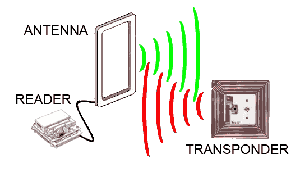Live Video Streaming
The Raspberry Pi (“RPi”) can be used for real-time video streaming using the RPi Full HD (1920×1080) camera. The stream format can be set to HTTP Live Streaming (“HLS”), RTP, UDP, and other streaming formats. Live video streams can also be recorded and saved as files locally on the RPi or on a remote server.
The RPi can also be used for transcoding live video streams using Linux based programs such as ffmpeg, GStreamer, or VLC. Many high performance video applications are written in C/C++.
High Speed Analog to Digital Data Acquisition
The RPI can acquire 12 bit analog to digital samples at 200 K samples per second (200 ksps) using the AD7854, which has a parallel interface.
Using the Serial Peripheral Interface (“SPI”) the RPi can acquire 10 bit analog to digital samples at 200 K samples per second (200 ksps) using the MCP3004/3008.
RFID
A RFID reader board and antenna has been connected via a serial port to a Raspberry Pi single board computer that has been configured as a full LAMP stack (i.e. Linux-Apache-MySQL-PHP). The Raspberry Pi (“RPi”) has phpMyAdmin and Webmin installed, and is a fully functional open source Linux Internet server.

The RPi is running Raspbian, which is a modified version of Debian Linux that knows how to talk to the RPi peripherals such as the video camera, GPIO (i.e. General Purpose Input/Output connection), and the serial port (i.e. UART).
The RPi is connected to the Internet via a Wireless network.
A custom PHP script running on the RPi sends commands to the RFID reader board which then returns the tagID of each tag in range. The tagID of each unique tag is then sent to the remote server (i.e. the webpage that you are reading) via HTTP POST. The custom PHP script on the RPi can clear the tagID list on both ends of the connection.
Electronic Message Boards
The RPi’s HDMI port supports Full HD (1920×1080 pixels) to display remotely controlled messages on large monitors. The RPi automatically contacts a central control IP address on the Internet which provides new display content and software updates. Applications include airline schedules, restaurant menus, and advertising. Using browser fullscreen mode allows content to be easily generated using HTML5, including embedded videos with protocols such as RTMP and HTTP Live Streaming (HLS).
Video Motion Activated, Audio Activated, and Heat Activated Security.
Video motion detection and audio detection software can trigger the RPi to upstream video, audio, and snapshots to a central control IP address on the Internet. Heat, door, and window sensors can also be implemented. The RPi can also control emergency lighting, sirens, fire sprinklers, and door locks.
Interactive Kiosks.
The RPi HDMI port can be coupled with a touch screen to run interactive kiosks that can obtain updates and send information to a central kiosk controller via an Internet connection or a cell phone link.
Remote Scientific Sensors and GPS Tracking.
The RPi can be powered by a solar charged battery that collects GPS position and/or scientific sensor data and transmits data via a cell phone data link and/or a satellite data link.
Local Web Server for Instrument Control.
A full LAMP stack (i.e. Linux, Apache, MySQL, and PHP) can be installed on a RPi to support local control and configuration of scientific instruments and software. The open source MySQL database graphic user interface phpMyAdmin and server control panel Webmin can also be installed to make the interface to a RPI virtually identical as to any Linux server. puTTY can also be used with ssh tunnels for root shell level access to the RPi from the Internet, even when the RPi is installed in a internal subnet that is behind an incoming firewall (as long a the RPi can access the Internet with outgoing connections).
Please contact us for a demonstration.